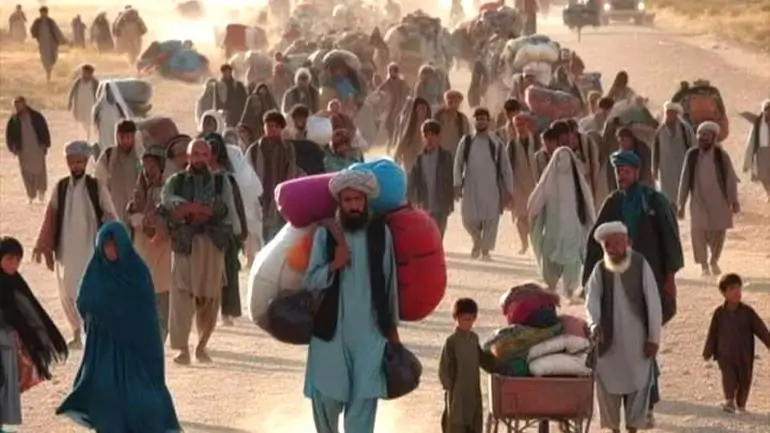A shadow of the Soviet-Afghan War’s tumultuous legacy stretches across the fragile lives of Afghan refugees in Pakistan. General Zia-ul-Haq’s government, emboldened by American and Saudi Arabian support, became a key player in aiding the mujahideen resistance. While Soviet influence was the immediate target, an unintended consequence arose: the nurturing of militant networks that later mutated into formidable terrorist outfits, destabilizing the entire region.
During the conflict, Pakistan’s Inter-Services Intelligence (ISI) and the CIA, united against a common enemy, formed a strategic alliance. However, this collaboration, born out of urgency, inadvertently fostered the growth of extremist ideologies and militant groups. The unintended consequences of this alliance planted the seeds for the Taliban’s rise and that of other extremist factions, casting a long shadow on regional security even after the guns fell silent.
Fast forward to late 2023, and the Afghan refugee crisis in Pakistan reached a critical turning point, exposing the intricate tapestry of geopolitics, security anxieties, and humanitarian disasters. For decades, Pakistan had been a sanctuary for Afghans fleeing violence and instability. However, a dramatic policy shift targeted an estimated 1.3 million undocumented refugees for deportation, triggering an unprecedented exodus. At its peak, daily border crossings exceeded a staggering 20,000, painting a poignant picture of families ripped from their temporary havens and forced to embark on a journey back to the unknown.
The humanitarian crisis in Afghanistan exacerbated by the influx of hundreds of thousands of returnees reached a breaking point.
The process of deportation was marred by allegations of human rights violations by Pakistani authorities, meticulously documented by organizations like Human Rights Watch. Night raids, beatings, and arbitrary confiscation of documents became the grim tools used to pressure Afghans into leaving. These practices, aimed at speeding up returns, drew sharp criticism from international agencies and human rights groups, casting a dark cloud over the entire operation.
Upon returning to Afghanistan, the refugees encountered a landscape of despair. The Taliban’s rule was characterized by political instability, economic hardship, and regressive policies, particularly towards women’s and girls’ education. The humanitarian crisis, exacerbated by the influx of hundreds of thousands of returnees, reached a breaking point. Many, including women and children, found themselves without shelter, jobs, or even basic necessities like food, healthcare, and education.
For decades, Pakistan had been a sanctuary for Afghans fleeing violence and instability. However, a dramatic policy shift triggered an unprecedented exodus.
This desperate situation demanded a swift and coordinated international response. Humanitarian organizations and UN agencies scrambled to provide much-needed support and assistance to the returning refugees. However, the crisis exposed the urgent need for a comprehensive, long-term strategy to address the deepening humanitarian catastrophe in Afghanistan, further compounded by the influx of returnees.
The plight of Afghan refugees in Pakistan and their forced return to an unstable Afghanistan serve as a stark reminder of ongoing humanitarian crises demanding the world’s attention. It is a clarion call for policies and actions that prioritize the dignity and rights of refugees while tackling complex geopolitical and economic challenges. Only through coordinated efforts can we alleviate the suffering of millions caught in the crossfire of history, ensuring a future where hope finds fertile ground once again.

An appreciable writing style. Keep it up, Noor! Hope to read more of your writing.